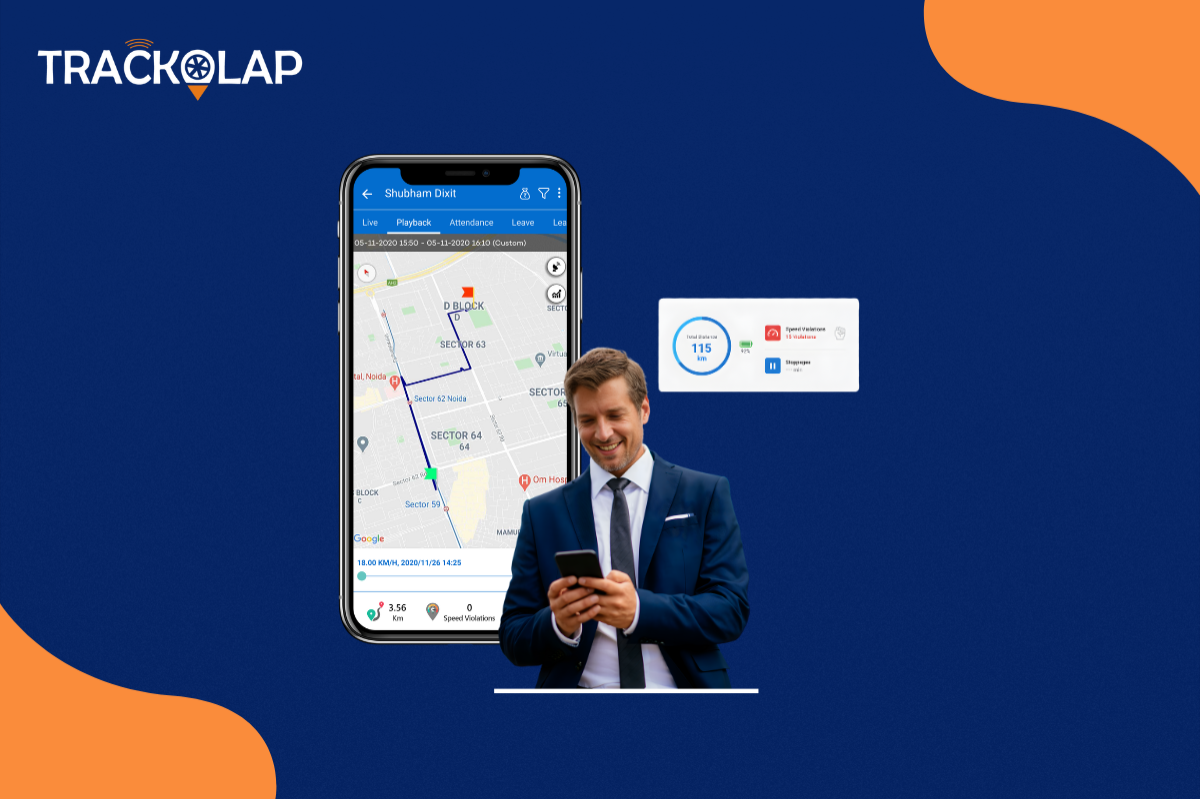
Roadmap To Edtech Sales: How Can Inquiry-To-Conversion Rates Be Improved?
The world of education is in a constant state of transformation, and in recent years, the EdTech (Educational Technology) sector has emerged as a driving force behind this revolution. The demand for innovative sales automation solutions to boost business growth has skyrocketed, making EdTech one of the fastest-growing industries globally.
However, as the EdTech landscape becomes increasingly competitive, the ability to convert inquiries into loyal customers has become paramount for companies operating in this space.
In this rapidly evolving industry, where success hinges on attracting and retaining educational institutions, instructors, and students alike, improving inquiry-to-conversion rates is a strategic imperative.
TrackOlap’s dynamic tools are designed to empower companies with the means to do just that. In this blog, we will take you on a comprehensive journey through the roadmap to EdTech sales success, highlighting how we can be your guiding light in the quest to enhance your inquiry-to-conversion rates and achieve unprecedented growth in the EdTech industry .
What are the Challenges Related to Sales Conversion Rates in the EdTech Landscape?
In the EdTech landscape, like in any industry, there are unique challenges that can hinder the improvement of sales conversion rates. Addressing these challenges is essential for the sustained growth and success of EdTech companies. Here are some of the key challenges related to sales conversion rates in the EdTech landscape:
Complex Decision-Making Processes
Educational institutions often have complex decision-making processes involving multiple stakeholders, including administrators, educators, and IT departments. Convincing all these stakeholders to align and make a purchase decision can be time-consuming and challenging.
Budget Constraints
Many schools, colleges, and universities operate on limited budgets. Convincing them to allocate funds for lead-tracking solutions can be difficult, especially when they have competing financial priorities.
Resistance to Change
Teachers and administrators may be resistant to adopting new technologies, especially if they have been using traditional methods for years. Overcoming this resistance and demonstrating the benefits of EdTech can be a significant hurdle.
Customization and Integration
These solutions often need to be customized to meet the specific needs of educational institutions. Additionally, integrating these solutions with existing IT infrastructure can be complex and costly.
Data Privacy and Security Concerns
Educational institutions handle sensitive student data, and data security and privacy are paramount. EdTech companies must address these concerns to gain the trust of potential customers.
Measuring Impact and ROI
Demonstrating a clear return on investment (ROI) for EdTech solutions can be challenging. Quantifying the impact of these tools on educational outcomes and student performance is crucial for convincing institutions to invest.
Content Relevance
Ensuring that EdTech content remains relevant and up-to-date is a continuous challenge. Educational materials and technology should align with evolving curriculum standards and teaching methods.
Competitive Landscape
The EdTech market is highly competitive, with numerous providers offering similar solutions. Standing out from the competition and differentiating one's product can be challenging.
Access and Equity
Ensuring that lead management solutions are accessible to all students, regardless of their socio-economic backgrounds or physical abilities, is a critical challenge. Bridging the digital divide and addressing equity concerns is an ongoing effort.
Compliance with Regulations
EdTech companies must comply with various regulations related to student data privacy, accessibility, and content standards. Staying current with these regulations can be complex.
Market Saturation
In some niches of the EdTech market, saturation may occur, making it difficult to find new growth opportunities. EdTech companies must continually innovate to stay competitive.
How to Improve Sales Conversions in the EdTech Industry?
Lead Allocation
Seamlessly segment your leads and direct them to the appropriate team or individual with effortless precision, guaranteeing that each lead lands in the hands of the right personnel for tailored interactions.
Sales Pipeline Mastery
Maintain a streamlined and clutter-free sales pipeline using our cutting-edge lead management software , affording you the ability to closely monitor the real-time progress of individual leads. This enhanced visibility empowers you to make pinpoint decisions at every juncture of the sales journey.
Lead Prioritization
Effortlessly identify and prioritize leads based on their potential conversion within your sales funnel, ensuring you pursue the most promising prospects with unwavering efficiency. Our top-notch lead-tracking software equips you to allocate resources judiciously.
Comprehensive Data Management
Harness the capabilities of our all-inclusive lead management tool to centralize your lead data, employee information, and other pertinent details in a single secure repository. Our robust security features guarantee the protection of your sensitive data.
Lead Scoring
The Lead Management tool can assign scores to leads based on their activities and interactions. This helps sales teams prioritize high-potential leads, allowing them to focus their efforts on those most likely to convert.
Insightful Dashboards & Reports
Attain a holistic understanding of your leads through an intuitive analytical dashboard and effortlessly generate over 100 potent reports with a simple click. This feature of our lead management CRM empowers you to make data-backed decisions, fine-tuning your sales strategies for optimal results.
Mobile CRM Accessibility
With TrackOlap's mobile lead tracking CRM solution, which operates seamlessly within the SaaS framework, you can oversee your customer interactions and field workforce from anywhere, at any time. This mobile convenience amplifies your adaptability and responsiveness, ensuring that no opportunity to engage with leads and customers effectively is ever overlooked.
Never pass up an opportunity to take action or a follow-up
When you assign tasks or send follow-up requests to your employees via the transparent dashboard, there's no chance of missing out on follow-ups or experiencing delays in taking action by your team. The advanced lead monitoring tools ensure that every lead receives the attention it deserves and keeps your sales process running smoothly.
What Are the Key Performance Indicators (KPIs) for Edtech Sales?
Key Performance Indicators (KPIs) for EdTech sales are essential metrics that help assess the effectiveness of sales strategies and the overall health of an EdTech company's sales operations. These KPIs provide valuable insights into how well the company is acquiring and retaining customers. Here are some key performance indicators for EdTech sales:
Conversion Rate
This KPI measures the percentage of leads or prospects who convert into paying customers. It's a fundamental metric for evaluating the effectiveness of the sales funnel.
Customer Acquisition Cost (CAC)
The cost of acquiring a new customer (CAC) is a measurement of this cost. It includes marketing and sales expenses. A lower CAC indicates a more efficient sales process in terms of cost.
Customer Lifetime Value (CLTV or LTV)
CLTV estimates the total revenue a customer is expected to generate over their lifetime as a paying customer. It helps assess the long-term value of each customer and guides sales and marketing efforts.
Churn Rate
The churn rate measures the percentage of customers who cancel their subscriptions or discontinue using the EdTech product. A high churn rate can signal issues with customer retention.
Average Sales Cycle Length
This KPI tracks the average amount of time it takes to move a lead from initial contact to conversion. Revenue growth may result from cutting the sales cycle.
Sales Pipeline Velocity
The rate at which leads move through the sales pipeline is known as pipeline velocity. It takes into account factors like lead generation, conversion rates, and deal size.
Lead-to-Customer Ratio
This ratio compares the number of leads generated to the number of customers acquired. It helps evaluate the efficiency of lead generation and conversion efforts.
Client satisfaction (CSAT) and Net Promoter Score (NPS)
These measures assess the satisfaction and loyalty of existing customers. Satisfied customers are more likely to continue using the product and refer others.
Upsell and Cross-sell Rates
These metrics track the percentage of existing customers who upgrade to higher-tier plans or purchase additional products or services. They indicate the effectiveness of upselling and cross-selling strategies.
Revenue Growth
Overall revenue growth is a critical KPI for assessing the financial health of an EdTech company. It's essential to track both year-over-year and month-over-month revenue growth.
Sales Win Rate
Win rate measures the percentage of sales opportunities that result in a successful sale. It helps identify areas where the sales process can be improved.
Customer Retention Rate
This KPI calculates the percentage of customers who continue to use the product or renew their subscriptions. High retention rates are indicative of a healthy customer base.
Lead Response Time
Quick response to leads is crucial. This KPI measures the time it takes for sales teams to respond to inquiries and leads. Conversion rates may increase with quicker response times.
Sales Team Performance
Assess individual and team performance using metrics like the number of deals closed, average deal size, and revenue generated per salesperson.
Sales Funnel Drop-off Rates
Examine the points in the sales funnel where leads stall. Identifying bottlenecks or areas of high drop-off can help optimize the sales process.
Product Adoption Rate
For EdTech companies, tracking how quickly and extensively users adopt and engage with the product is vital. This can be a leading indicator of future sales growth.
Lead Quality
Assess the quality of leads by measuring the percentage of leads that meet specific criteria or qualifications for conversion.
Renewal Rate
In subscription-based EdTech models, the renewal rate indicates the percentage of customers who renew their subscriptions. High renewal rates are crucial for sustained revenue growth.
Conclusion
The roadmap to improving inquiry-to-conversion rates in the EdTech landscape is a dynamic journey that requires the right tools and strategies. To empower your EdTech sales efforts and harness the full potential of lead management, consider exploring TrackOlap's comprehensive and best lead management Software.
Our advanced lead management tools, data-driven insights, and mobile CRM capabilities can help you navigate the challenges and elevate your conversion rates. Don't miss the opportunity to transform your EdTech sales. Take the next step with TrackOlap and unlock a world of possibilities in the education technology market. Contact us today to learn more and embark on your journey to success.






























 Back to Blogs
Back to Blogs










 D-5 Sector-59, Noida, Uttar Pradesh (India)
D-5 Sector-59, Noida, Uttar Pradesh (India) contactus@trackolap.com
contactus@trackolap.com 7011494501
7011494501










